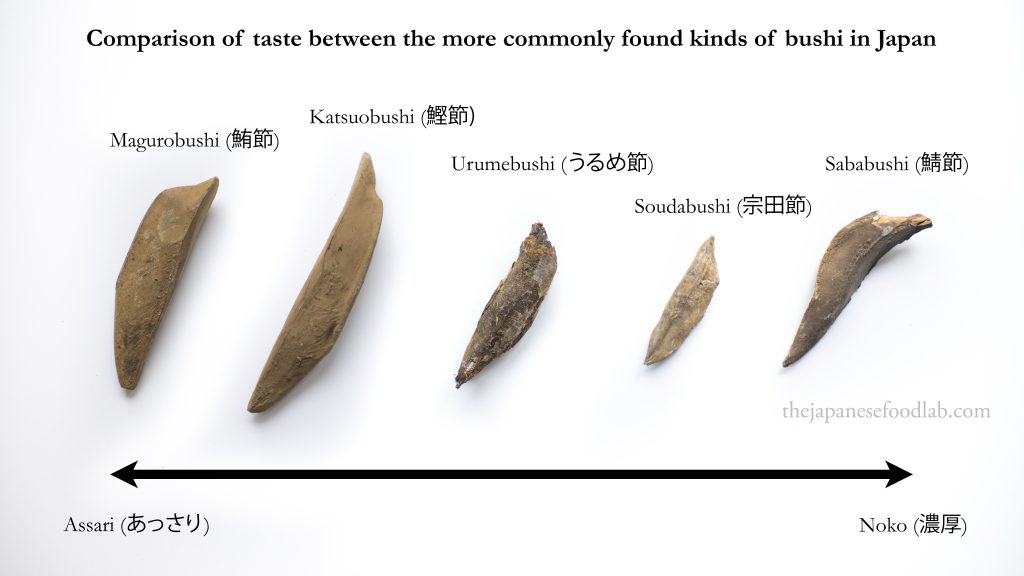This is an article from our types of bushi series.

So how do other types of bushi taste and how might they compare to Katsuobushi?
One way to consider how different types of bushi taste is to consider their ranking on a spectrum from assari (あっさり) to noko (濃厚). This roughly translates to from lightness to richness.
However, when we previously covered Japanese rice selection charts, we tried to cover the spectrums of taste and mouthfeel by which rice is evaluated. There, we felt like the definition of lightness didn’t convey the meaning of the word assari accurately, and therefore attempted to describe it. Quote:
“To fully grasp its meaning, imagine a personality characterized by a bright and candid nature, exuding a hearty demeanor that is easy to appreciate. Similarly, the ingredient in question possesses a unique assertiveness in its texture, yet it maintains a smooth and effortless flow when consumed. Such an ingredient embodies an amiable disposition, making it a pleasure to enjoy.”
Conversely, the word noko can be thought of as a description of something having the quality of being dark and strong, like a color that is rich and concentrated.
This spectrum is clearly reflected in the contexts in which the different kinds of bushi are used. For example, magurobushi is mainly used by high-end specialty restaurants that seek to emphasize the flavors of their seasonal ingredients that have been meticulously sourced. Therefore, not only does the lightness of magurobushi not overpower the taste of ingredients, but its purity of taste helps further accentuate it.
On the other end of the spectrum, richer kinds of bushi with a more pronounced flavor like sodabushi and sababushi are used to make much stronger soups and sauces like those for udon as these restaurants focus on providing a heart-warming and filling meal to office workers.